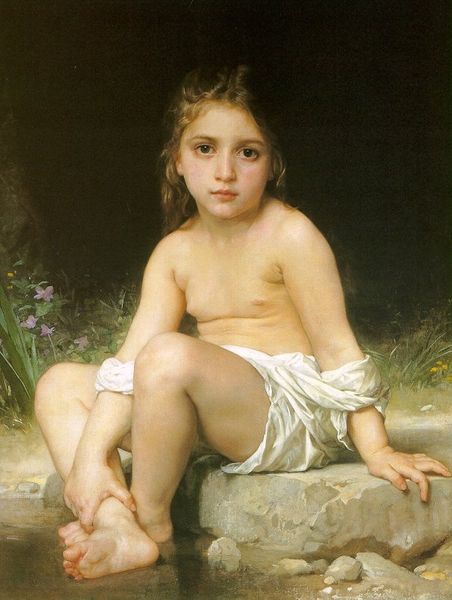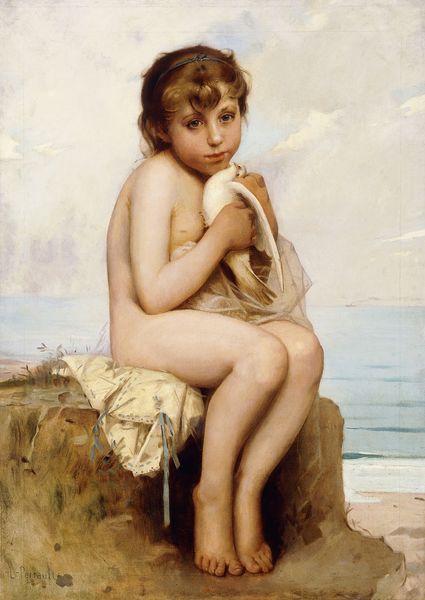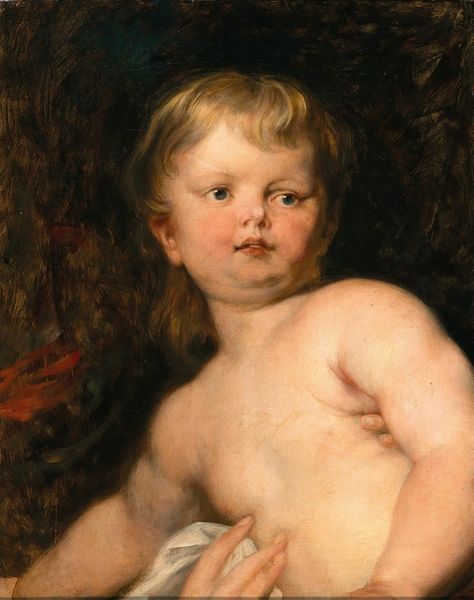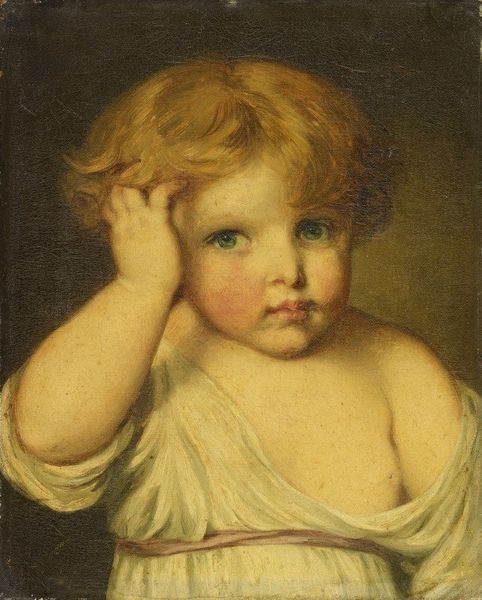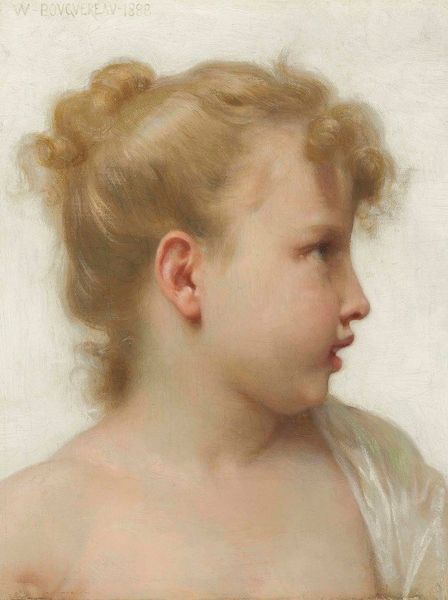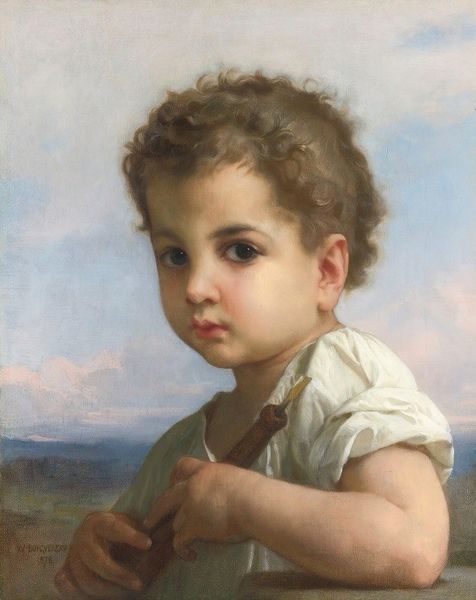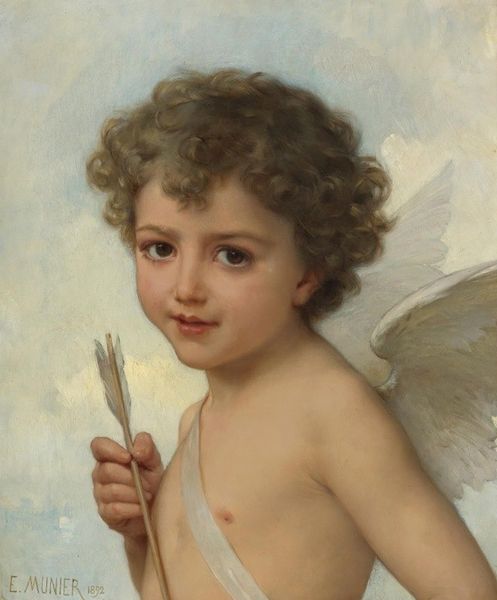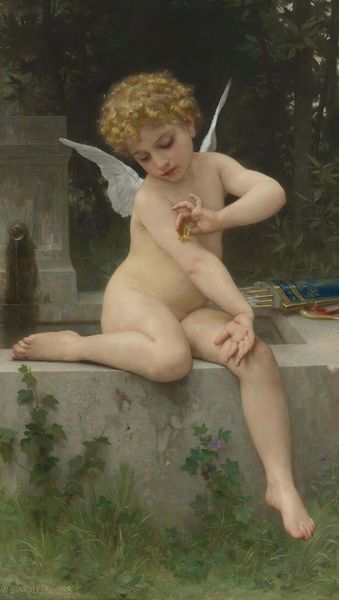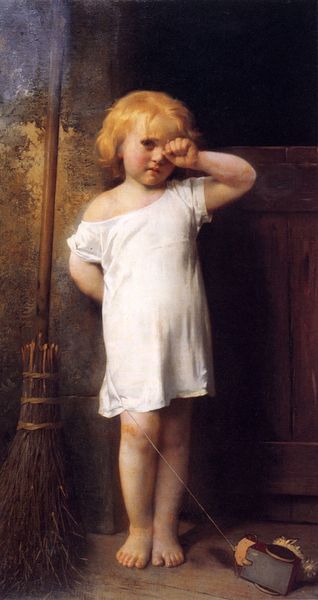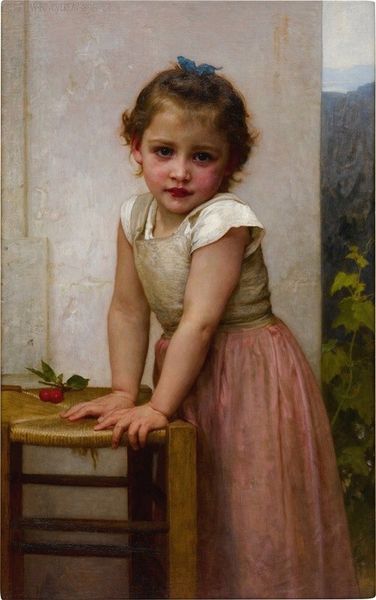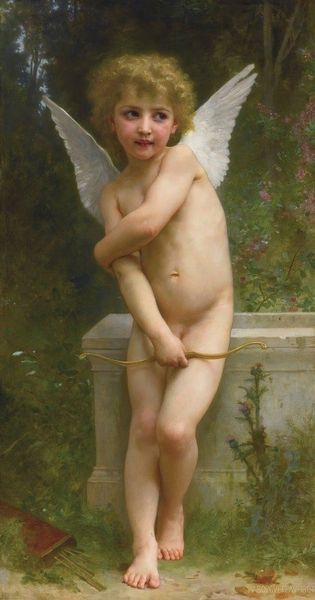
Copyright: Public Domain: Artvee
Curator: Here we have William Bouguereau's "L’amour Au Repos", or "Resting Cupid," created in 1904 using oil paint. What’s your initial read on it? Editor: It’s bathed in this warm, hazy light. It’s sweet, almost cloying—like a memory you’re not sure you trust. There's a certain stillness. Curator: That stillness stems in part from Bouguereau's masterly control of line and form, doesn't it? Note how the soft contours of the figure are defined, creating a balanced, idealized human form—reflective of his academic training. Editor: Idealized is right. I see this little cherub lounging about, a mischievous imp, perhaps after a day of flinging arrows… there’s that playful quality juxtaposed with incredible skill. Curator: The composition places the figure slightly off-center, drawing the eye into a visual dance across the canvas. The soft focus background acts almost as a curtain, directing attention to the cherub, bathed in a delicate luminosity. It's academically rigorous, yet emotionally accessible. Editor: Accessible is the key word here, I think. The way his toes curl and the expression on his face suggests this profound calm… Bouguereau captured something about fleeting childhood innocence. Almost painfully perfect. Curator: "Painfully perfect" encapsulates the ongoing dialogue surrounding Bouguereau. His art embodies academic ideals while provoking questions about representation and sentimentality in art. The painting utilizes classical allegorical forms, blending those with the prevailing taste for sentimental genre scenes popular during the Belle Epoque. Editor: And whether we roll our eyes at that sentimentality or succumb to its charms is, ultimately, up to each viewer. But this painting whispers to a vulnerable place in us, I think. Curator: Agreed. This work serves as a portal to examine our aesthetic predispositions, as we grapple with art traditions and innovation and personal meaning. Editor: Indeed. It seems Bouguereau still invites us into a contemplative repose of our own.
Comments
No comments
Be the first to comment and join the conversation on the ultimate creative platform.
